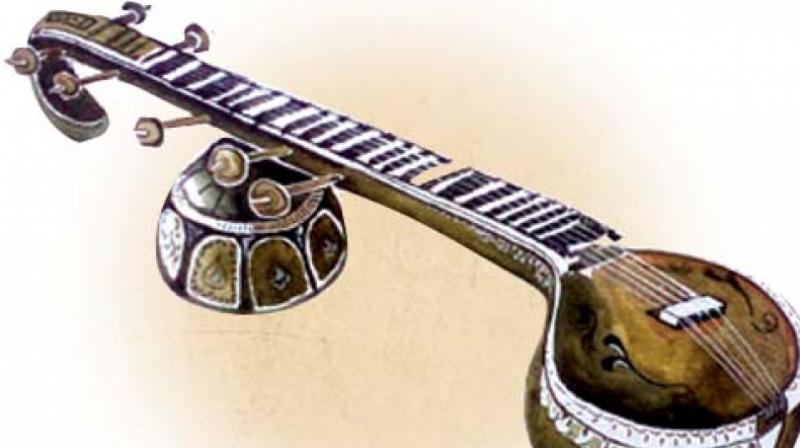Haridasa compositions to be archived: Expert

ANANTAPUR: Researchers and devotees and staunch followers of Haridasa movement were on a study to recollect missing compositions of St.Purandara Dasa, widely referred to as the Pitamaha , as a sign of honor as his contribution in the field of Carnatic music. He composed more than 4.75 lakh kirtanas touching to local issues and traditions of South India during his tenure. However, to the misfortunes of the field of Carnatic music, not more than 10,000 pieces of musical compositions are accessible today.
Born in the year 1484, Purandara Dasa, was a professionally diamond merchant sacrificed everything after realisation. He happened to be an ardent disciple of Sri Vyasarja, rajguru of Vijayanagar Empire. Prof. Sambamoorthy, Dasa had his formal initiation at the hands of Vyasatirtha in 1525 at age of 40 years old. Purandara Dasa traveled extensively through the length and breadth of the Vijayanagara Empire in South India including Tirupati, Pandharapura composing and rendering soul stirring songs in praise of god. He spent his last years in Hampi and sang in Krishnadevaraya's durbar. The mantapa (mandap) in which he stayed is known as Purandara Dasa Mantapa (mandap) in Hampi. He died in 1564 at the age of 80.
His aradhana is being celebrated across various parts of South India including Pandaripur, Tirumala, Hampi and Mantrayalam. “Purandara Dasa was both a composer and singer. He was one of the colossal exponents of the South Indian Classical music. Some people held him with respects of high standards and believed him to be an incarnation of Narada, the great sage, descended upon earth,” Vyasaraj Mutt uttaradhikari Sri Vidyavijaya Theertha Swamiji, observed. Swamiji who did research on Purandara Dasa keerthanas stressed need to collect maximum numbers.
Purandara Dasa started to give form to the elemental lessons of Carnatic music by giving a structure to each graded exercise. These graded exercises were referred to as the Svaravalis and the Alankaras. During the same period, he invented the Raga Mayamalavagowla. He labelled it as the scale to be learnt by the new kids on block before all else in the field. This unwritten law established by Purandara Dasa has been passed on to each generation of Carnatic musicians and is being practiced until this day, pandit Veera Swamy observed.
The saint also had a colossal influence on the Hindustani music. Swami Hari-das, a Saraswat Brahmin and teacher of the foremost Hindustani musician Tansen, was a disciple of Purandara Dasa. In order to honour him for his contributions to the field of Carnatic music, a statue of Purandara Dasa was dedicated at the foot of Tirumala in Alipiri. The Dasa Sahitya Project aims at acquainting people with the lives and teachings of Karnataka Haridasas devotion to Venkateswara in particular. “The project has an Advisory Board and Expert Committee, comprising eminent scholars, which reviews programmes and helps plan various activities involving research, publication and propagation. Conducting studies on Dasa Sahitya,” the Tirumala Tirupati Devasthanam Dasa Sshitya special officer Ananda Theerthacharya said.

